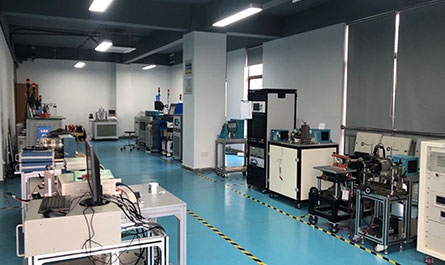🚀 Precision Unleashed Mastering Stepper Motor Torque Calibration for Peak Performance 🔧
In the fast-paced world of automation and robotics, every micron of movement and every ounce of torque matters. Stepper motors, the unsung heroes behind countless industrial and consumer applications, rely on one critical factor to deliver flawless performance: **torque calibration**. Whether you’re designing a cutting-edge 3D printer, a surgical robot, or an autonomous drone, understanding and optimizing torque calibration can mean the difference between seamless operation and costly downtime. Let’s dive into why this process is your secret weapon—and how to master it. —– ### The Heartbeat of Motion Control: Why Torque Calibration Matters 💡 Stepper motors are unique in their ability to provide precise positional control without feedback systems—until something goes wrong. Torque, the rotational force driving these motors, isn’t a static value. It fluctuates with temperature, load changes, and even component aging. *Uncalibrated torque* leads to missed steps, overheating, and premature wear. Imagine a CNC machine engraving intricate designs: even a 5% torque mismatch could ruin a masterpiece. Calibration ensures your motor delivers *exactly* the torque needed—no more, no less. It’s like tuning a piano: hit the right notes, and the symphony plays perfectly. —– ### 🔬 The Science Behind the Spin: How Torque Calibration Works Torque calibration isn’t just about turning a dial. It’s a systematic dance of measurements, adjustments, and validations. Here’s a simplified breakdown: 1. **Baseline Testing** Measure the motor’s torque output under controlled conditions. Tools like torque sensors or dynamometers capture real-world data. 2. **Load Simulation** Replicate operational stresses—sudden load changes, temperature spikes, or prolonged runtime—to identify torque drift. 3. **Algorithmic Adjustment** Use firmware or dedicated controllers to tweak current supplied to the motor windings. This balances torque output across all phases. 4. **Validation Loops** Run iterative tests to confirm consistency. Advanced systems even self-calibrate in real-time using AI-driven feedback. For industries like aerospace or medical devices, where tolerances are measured in microns, this process isn’t optional—it’s mission-critical. —– ### 🛠️ DIY vs. Professional Calibration: Which Path is Right for You? Hobbyists and small-scale manufacturers often rely on manual calibration using open-source tools like Arduino or Raspberry Pi. While cost-effective, this approach has pitfalls: – Human error in measurements – Limited ability to simulate extreme conditions – Time-intensive trial-and-error adjustments Professional calibration systems, like the **TorqMaster Pro Series**, automate the process with laser-guided precision. These systems integrate thermal imaging, dynamic load testing, and cloud-based analytics to deliver results in minutes—not hours. For hysteresis brake -stakes applications, the ROI is undeniable: fewer defects, reduced energy costs, and longer motor lifespans. —– ### 🌟 Case Study: How Precision Calibration Transformed a Manufacturing Giant A leading electric vehicle manufacturer faced recurring issues with robotic arm jitters during battery assembly. Post-calibration audits revealed a 12% torque variance in their stepper motors during high-speed operations. After implementing a closed-loop calibration system, they achieved: – 40% reduction in assembly line downtime – 18% improvement in energy efficiency – Zero defects over a 90-day production cycle The takeaway? Calibration isn’t an expense—it’s an investment. —– ### 🔮 The Future of Torque Calibration: Smart Tech Takes the Wheel Emerging technologies are reshaping the calibration landscape: – **AI-Powered Predictive Calibration**: Systems that learn from operational data to anticipate torque drift before it occurs. – **IoT-Enabled Motors**: Real-time torque monitoring via embedded sensors, sending alerts to engineers’ smartphones. – **Quantum Torque Mapping**: Experimental techniques using quantum sensors for nanometer-level accuracy. Staying ahead means embracing these innovations—or risk being left in the dust. —– ### 🧰 Your Action Plan: Steps to Achieve Perfect Torque Calibration Ready to optimize your stepper motors? Follow this roadmap: 1. **Audit Your Current Setup** Identify motors operating outside recommended torque ranges. Look for symptoms like overheating or erratic movement. 2. **Choose the Right Tools** Invest in calibration equipment matching your precision needs. For mission-critical systems, prioritize automated solutions. 3. **Train Your Team** Ensure technicians understand calibration protocols. Even the best tools fail without skilled hands. 4. **Schedule Regular Maintenance** Torque calibration isn’t a one-and-done task. Build it into your maintenance calendar. 5. **Monitor and Adapt**  Use data analytics to track performance trends. Adjust calibration schedules based on usage patterns. —– ### 💥 The Cost of Ignoring Calibration: A Cautionary Tale A food packaging company skipped calibrations to “save time.” Six months later, a motor misfire caused a conveyor belt malfunction, destroying $250k worth of product. The aftermath? Lost contracts, a tarnished reputation, and emergency calibration retrofits. Don’t let this be you. —– ### Final Thoughts: Calibration as Competitive Advantage 🏆 In a world where efficiency and precision define success, stepper motor torque calibration is no longer optional—it’s the backbone of reliability. From cobots in smart factories to precision lab equipment, calibrated motors ensure your systems hum with perfection. The question isn’t “Can I afford to calibrate?” It’s “Can I afford not to?” —– Ready to unlock your motors’ full potential? Partner with experts who speak the language of torque. Your machines—and your bottom line—will thank you. 🚀
Use data analytics to track performance trends. Adjust calibration schedules based on usage patterns. —– ### 💥 The Cost of Ignoring Calibration: A Cautionary Tale A food packaging company skipped calibrations to “save time.” Six months later, a motor misfire caused a conveyor belt malfunction, destroying $250k worth of product. The aftermath? Lost contracts, a tarnished reputation, and emergency calibration retrofits. Don’t let this be you. —– ### Final Thoughts: Calibration as Competitive Advantage 🏆 In a world where efficiency and precision define success, stepper motor torque calibration is no longer optional—it’s the backbone of reliability. From cobots in smart factories to precision lab equipment, calibrated motors ensure your systems hum with perfection. The question isn’t “Can I afford to calibrate?” It’s “Can I afford not to?” —– Ready to unlock your motors’ full potential? Partner with experts who speak the language of torque. Your machines—and your bottom line—will thank you. 🚀